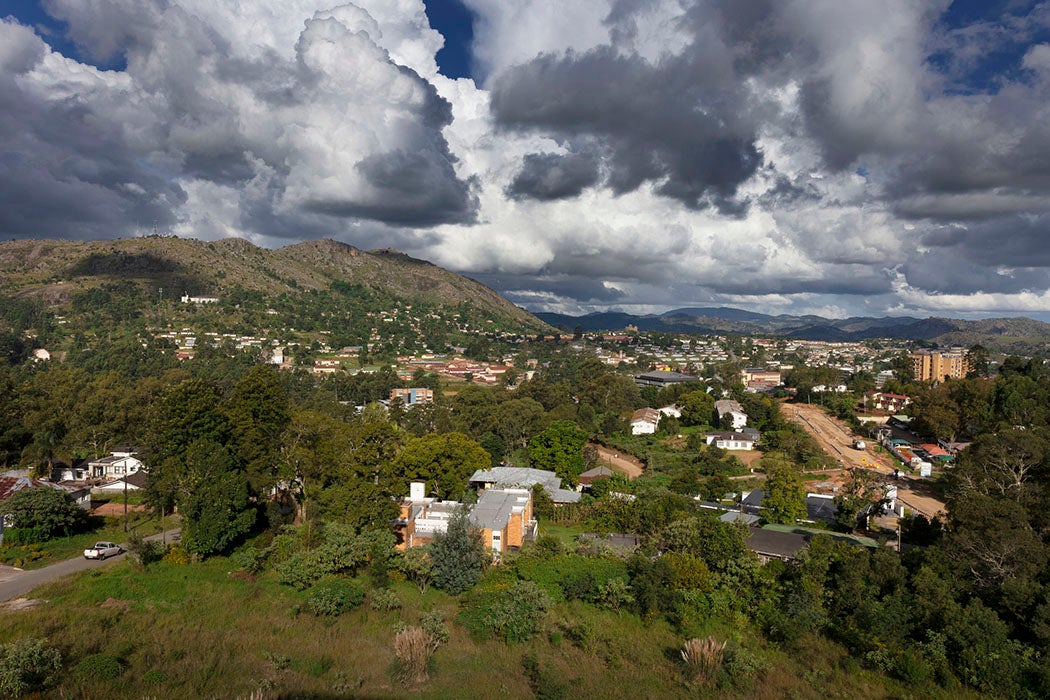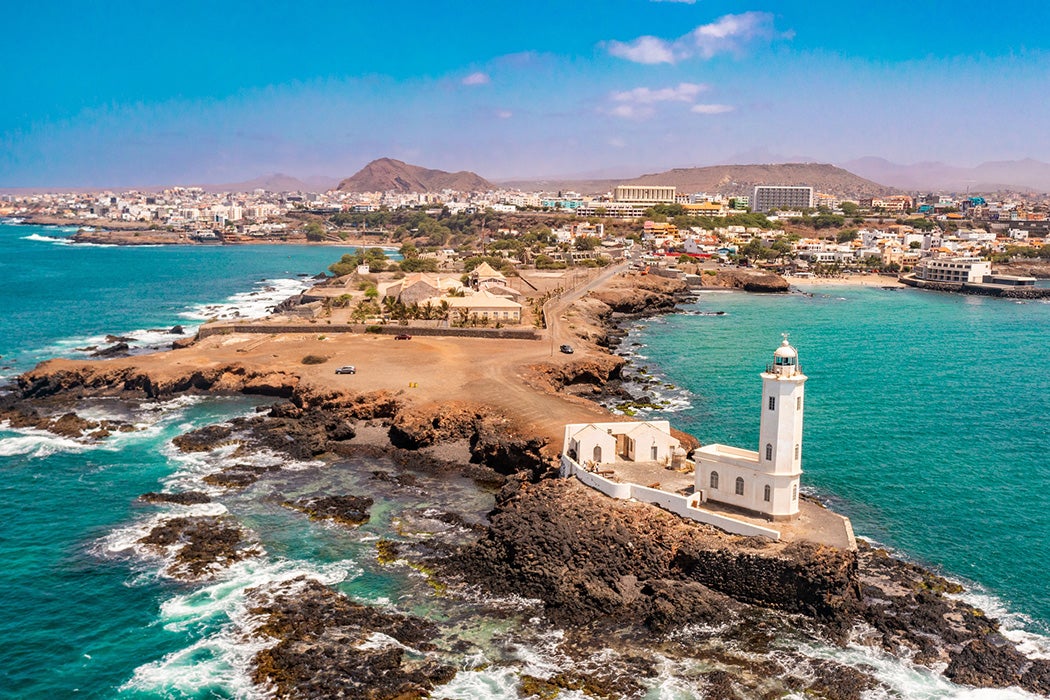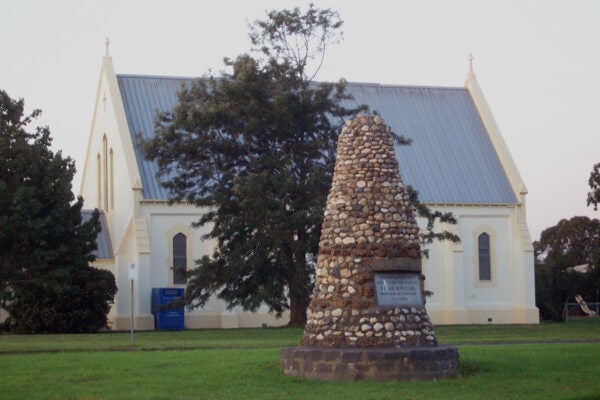What’s in a name? If you’re a country, rather than a person, then the answer, should you choose to change it, is a quite bewildering array of logistical expenses.
The tiny nation formerly known as Swaziland didn’t seem on its surface to be a country with the kind of surplus wealth that could afford to change everything from passports to government letterheads. But that’s what happened in 2018 when King Mswati III decreed that Swaziland was changing its name to Eswatini.
Wedged in the far southeastern corner of the bottom of the continent, between South Africa and Mozambique, Eswatini is the last absolute monarchy in Africa, a status that bewilders modernizers and beguiles traditionalists. Educated at the prestigious British private school of Sherborne, the current king returned to Africa to take up the throne at the age of just eighteen. Yet before even this date, it’s likely that he was schooled by his family about the cunning and fortitude that his predecessors deployed in order to stop what was then Swaziland disappearing from colonial era maps.
One of Swaziland’s earliest foes was the South African Republic under Paul Kruger, who was president from 1883 and 1900 and whose desired inroads into this bijou country were later documented by Hamilton Sipho Simelane, in the Transafrican Journal of History.
“Kruger was a tough frontiersman whose basic aim was to preserve the independence of his republic and relieve it from British encirclement,” writes Simelane. “He gained the affection of his people through his connection with the early history of the trekkers,” or the Dutch-speaking settlers who migrated north from the Cape of Good Hope. Kruger
was determined to establish a strong republic controlled by Afrikaners [South Africans descended from Dutch colonists]. In mid 1883, the Swazi found themselves having to respond decisively to [Afrikaner] Boer encroachment. The Swazi course of action was to persistently report Boer encroachment to the British with the ultimate aim of convincing the British that Boer adventurism into Swaziland was a threat to British interests. [Swazi King] Mbandzeni reasoned that British protection of their interests would logically check Boer inroads into Swazi territory. To further involve the British in the checking of Boer encroachment, Mbandzeni pleaded for British protection. Much as the British were reluctant to commit themselves on Swaziland, they were prepared to play the watch-dog role.
The tactic worked, and by the time independence finally came to Swaziland in the 1960s (the British, who indirectly ruled the Swazi state from 1903 to 1967, largely left the monarchical framework intact), the nation was strong enough to extol policies on multi-racial freedom that were the diametric opposite of the apartheid system in neighboring South Africa, a situation explored by Paul-Henri Bischoff in The Journal of Modern African Studies.
“[A]s soon as the colonial era ended,” Bischoff writes, Swaziland established
a foreign policy which strove to establish cordial relations with the rest of black Africa. In so doing, the Swazi leaders distanced themselves from Britain as regards Rhodesia, and from South Africa too…. Internally, the adoption of multi-racialism as a policy was designed to diminish—even if, initially, imperceptibly—the social and economic influence of white South Africans, and to displace them, at least partly, by the local petite bourgeoisie. The aim was also to encourage both existing and new overseas investors, since their presence continued to be seen as a boost to Swaziland’s independence.
Swaziland continued to plough its own political furrow against its larger neighbor until the end of apartheid. Yet, having survived the nefarious influence of its neighbor, another battle was emerging that transcended borders.
In the early 2000s Swaziland, by many estimates, had the highest rate of AIDS infection in the world by percentage of population. In a 2001 issue of African Studies Review, John. L. Daly explored what was making the epidemic run so far out of control.
“First, Swaziland is a culture with a polygamous tradition; males are allowed to enter into as many marriages as they can sustain economically,” Daly writes. The traditions were engrained, from the top of the social echelon to the bottom. For instance, then-ruler
King Mswat III has six official wives (and three other “wives in waiting”). In addition, Swazi law has a different definition of adultery for men and for women. For females, adultery is defined as voluntary sexual intercourse between a married woman and a man other than her husband. On the other hand, sexual intercourse between a married man and an unmarried woman or girl does not constitute adultery. In fact, sexual relationships between a married man and his younger, unmarried sister-in-law are considered acceptable.
Daly argues that “[t]hese cultural assumptions act as an impediment to the kinds of learned behaviors needed to curb the onslaught of the epidemic.”
Another cause of this medical disaster traces back to efforts to attract tourism in the early days of independence. Both during and after apartheid, many South African visitors traveled from Johannesburg and Pretoria for weekend visits, drawn by the prospect of multi-racial sex and relaxed gambling laws. The result was an explosion in Swazi women, through either coercion, desperation or free will, entering the sex worker trade.
More to Explore
Cape Verde’s Dilemma(s)
This perfidious situation, unintentional as its creation may have been, was strongly critiqued as far back as 1983 by Jonathan Crush and Paul Wellings in an article in The Journal of Modern African Studies.
“We have argued that, even at its peak the tourism industry…brought limited benefits to the inhabitants,” they write,
ostensibly because of the particularly noxious character of the created attractions… Why the state should wish to continue with collusion in a development activity which degrades its own people, and also runs directly counter to the rhetorical onslaughts against apartheid South Africa, is open to speculation.
With the AIDS crisis in Eswatini has been brought under control to some extent in more recent times, King Mswati III has long taken the decision that no national crisis should interfere with his freedom to live a life suitable for an absolute monarch. His excesses are documented by Nkwazi N. Mhango details in his book, How Berlin Conference Clung on Africa: What Africans Must Do.
“February 2005 saw King Mswati III of Eswatini, one of the world’s poorest countries spend £450,000 on 10 new BMWs for his 11 wives and three teenage fiancées,” Mhango writes. In 2005, that
latest extravagance was equivalent to almost half the £1 millions of British aid that Swaziland received in 2004. The cost of the BMWs is equal to 1.5 per cent of Swaziland’s health budget of £30 million. In a word, Swaziland is kept afloat because [of] more than £14 millions of international aid. Yet again, in the same year, the King spent almost £9 million on palaces, parties, and posh cars. His 36th birthday party, which was celebrated in the national stadium with 10,000 guests cost this poor nation £330,000.
To openly voice dissent against King Mswati is an extremely dangerous course of action. The only privately owned TV channel in the country belongs to the royal family, and journalists are liable to be prosecuted for criticizing the government or the King. Kerry Vincent, in her book Fictions of African Dictatorship: Postcolonial Power Across Genres, details the Swazi fiction scene post-independence, explaining that
much of the literary production has been influenced by an autocratic state that uses a traditionalist ideology to suppress freedom of expression. Many of these elements converge in the publishing history of Eric Sibanda’s siSwati [-language] detective story, “Sagila Semnikati” (The Owner’s Knobkerrie). The story’s original setting—the royal grounds where the [religious] Ncwala ceremony [of kingship] takes place—was quietly removed in the second edition of the anthology in which it originally appeared.
In the original version of the story [spoiler alert], the crime comes back to the court: two senior military officials who live in the royal residence are charged with murder. In the second edition of the story, the Ncwala setting is replaced with a less symbolic wedding ceremony, drawing the reader’s attention away from the proximity of the monarchy to criminality.
Weekly Newsletter
“[I]n 2015,” Vincent continues, “a report tabled at the Swaziland Parliament revealed that censorship at (state-controlled) Swazi Television was so tight that every month the Swaziland government issued directives to the station about what events it should cover.” The media, Vincent proposes, exist to serve the state. Moreover,
as recently as January 2018 an Independent Online (IOL) article written by Mel Frykber reported that Zweli Martin Dlamini, the editor of Swaziland Shopping, an independent newspaper based in Swaziland, was forced to flee the country after receiving death threats from the manager of Swazi Mobile, a telecommunications company that the king and other high-ranking officials own shares in. Dlamini’s paper was closed down by the government following the publication of his article, which exposed how Swazi Mobile had dislodged its rival, the parastatal company, SPTC.
It’s hardly surprising that censorship (and self-censorship among authors) occurs in a nation where the consequences of free speech can be so dire.
King Mswati may have been taught at an English private school. But, in the thirty-ninth year of his reign and with eleven wives at the latest count, he’s apparently decided that the British system of multi-party democracy and press freedom continues to be unsuitable for his kingdom or his lavish lifestyle.








